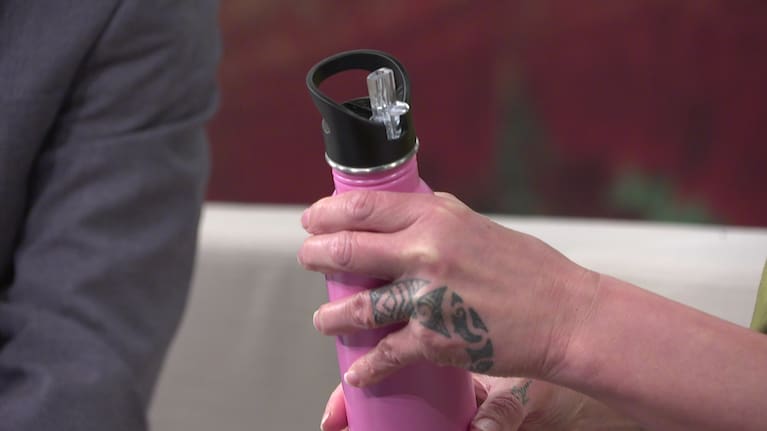If I’m just using my water bottle for good old fashioned H20, there’s no risk of contamination — right?
Wrong, according to some experts, who warn that mould and bacteria can sneak their way into reusable drink bottles right under your nose.
The solution? A regular scrub with a brush, according to AgResearch microbiologist Steve Archer.
He told Breakfast water bottles could pick up micro-organisms from the face and mouth.
The morning’s headlines in 90 seconds, including the trial for a man who set fire to Loafers Lodge begins, Erin Patterson’s back in court, and how dirty is your drink bottle? (Source: 1News)
“If there’s any particles of food from your backwash, that all gets in there and it’s a wonderful breeding ground within your drink bottle potentially. Particularly if it’s left in a warm environment for a long period of time.”
Archer said there could be “various fungi and bacteria, so you have moulds growing in there and you could have potentially e.coli”.
He stressed that people “don’t always get sick”, and it would vary from person to person as to how much they used their bottle, how often they cleaned it and how hygienic their mouth was.
“The bacteria within that can actually form this biofilm, which can be quite hard to remove so just giving it a straight rinse out doesn’t get that hard-to-remove bacteria.
“Best case scenario would be for you to rinse it out, and actually scrub it out with a brush,” he said.
However, Archer admitted with five kids he often doesn’t follow his own advice.
“I don’t think I’ve ever gotten sick myself from my water bottle contaminating it,” he laughed.
“Your nose is usually a good indicator of whether the water has some fungi in it.”
Asked which material of bottle was more hygienic, Archer said wide-mouth bottles or those that were transparent were better for being able to clean and see anything growing inside.
He also said that larger water bottles were “great for hydration” and it simply depended on how many times people washed it.
A reuseable water bottle can help you stay well-hydrated, but some health experts warn you also need to stay on top of cleaning it. (Source: Breakfast)
The last straw
Archer said drink bottles with a straw were susceptible to retaining bacteria in the “little components” which were often harder to clean.

“Microorganisms are absolutely everywhere, they cover every surface on and in your body, but in those little components in there that stay moist with a high enough concentration to stay in your saliva.”
Commenting on a large array of drink bottle types, Archer said he favoured the kind which could be unscrewed and taken apart to give a good, deep clean.









